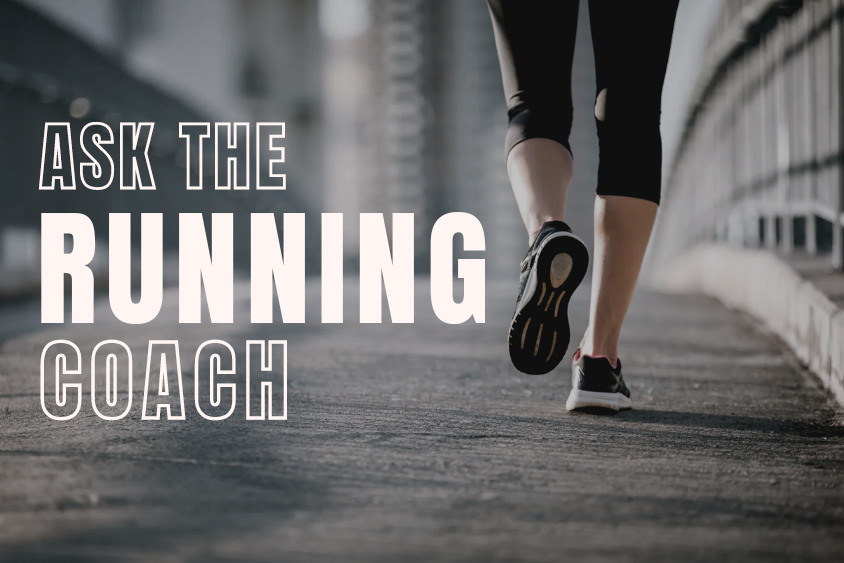
Our Certified Run Coach, Josh Janicek, addresses your burning questions! If you've ever had a question you've been dying to ask, now's your chance. Submit your queries through our Google form [here] for consideration. While we aim to make this series fun, our goal is to provide you with valuable insights. Please note that not all questions may be answered, and for medical advice, consult your healthcare professional, not from ACTIVE or Josh.
About Our Running Coach: Josh Janicek is a Road Runners Club of America Certified Run Coach based out of Austin, TX. He is a 7-time Boston Marathon qualifier, founder of an Austin-based run club and training group, and actively coaches athletes ranging from those who are new to running to competitive marathoners.
Why Trust Us?
ACTIVE.com's editorial team relies on the knowledge and experience of fitness and wellness experts including competitive athletes, coaches, physical therapists, nutritionists, and certified trainers. This helps us ensure the products we feature are of the highest standard. Collectively, the team has spent countless hours researching equipment, gear, and recovery tools in order to create the most accurate, authentic content for our readers. Customer satisfaction is also a key part of our review process, which is why we only feature products that are highly rated.
Let's dive in and get those questions answered!
Question #1: How can i tell if my gait is off?
Coach Josh: Seek the advice of a professional. Depending on where you live, you might have a local service provider who can analyze your gait, stride, form, and cadence, among other things. The provider could be a running coach, or someone who specializes in biomechanics, such as an exercise physiologist or physical therapist. If there are no service providers in your local area, gait analysis can also be rendered online by way of video recording. The provider should provide you with a very detailed protocol by which to record yourself either on a track or treadmill.
Question #2: I'm training for some shorter summer races, including a 5K (for the first time ever, at the age of 55!) and a 1-mile. I have long been plagued with severe nausea at the end of a race. I know it's a badge of honor to barf at the finish line, but how can I ... NOT?
Coach Josh: If, as you mention, it’s severe and you’re concerned, I’d recommend seeking the advice of a medical professional.The mile and 5k are fast races and, assuming you’re racing them as hard and fast as you can, you’re pushing your legs and lungs to their max in either event. You’ll hit your VO2 Max early in the mile and after that, it’s an exercise in hanging on for dear life. The 5k requires some pacing strategy, but you’re effectively redlining the whole distance.
When you’re demanding that much physical intensity from your body, it responds accordingly while prioritizing survival. That means it has to keep your brain, heart, and lungs operating while keeping your body temperature regulated. You’re effectively in “fight or flight” mode and your body deprioritizes processing food and digestion. And that most likely translates into you having some stuff sloshing around in your gut. Your brain has given your body the order to run as fast as it can and, at that point, your body has no immediate use for what’s in queue to be processed by your digestive system, so it responds by trying to get rid of it.
In the weeks and days leading up to your races, eat healthily with a focus on topping off your glycogen stores with healthy carbohydrates. Eat light and healthy the day before and of the race and avoid foods high in fiber as well as any other foods that could possibly upset your stomach or otherwise take a long time to digest. And again, always seek medical advice from a medical professional.
Question #3: When training for half marathon should the long run be race pace or slower?
Coach Josh: Generally speaking, slower. I would recommend some long(er) runs at or near race pace, but generally the longest run of your week should be slower than race pace. I recommend 30-90 seconds slower at a minimum for your long run pace. The slower pace gives you time on your feet, it strengthens your lower leg muscles, builds upon your cardiovascular fitness, teaches you to relax, and to remember to breathe. The long run should be focused on the length, be it in time or distance, and not the pace. Start your long run very relaxed, and then slow down even more to settle into a very easy pace. Practice getting faster intentionally with interval workouts, hill repeats, tempo, and pace runs. If you have one comfortably hard workout and one solid long run with base and recovery mileage baked into each week during your training cycle, and you practice consistency, I’m confident that you’ll see improvements, whether that’s a time PR, not having to walk, even splits, or having the ability to stay upright after running 13.1 miles.
Question #4: Can I trust a fart after mile 3?
Coach Josh: If you have to ask this question, then no, you are not quite prepared to trust a fart. At any mile.
Josh’s Pro-tip: rolled-up toilet paper fits nicely in a Ziplock sandwich or snack bag and tucked away in your shorts pocket.Josh’s Really Pro-tip: never shake hands with a runner who is only wearing one sock.
Submit your queries through our Google form [here] for consideration.
Check Out The Latest Nike Running Shoe Deals on Amazon
By clicking on the product links in this article, we may receive a commission fee at no cost to you, the reader. Sponsorships and affiliate commissions help support our research so we can help you find the best products. Read full affiliate disclosure here.


